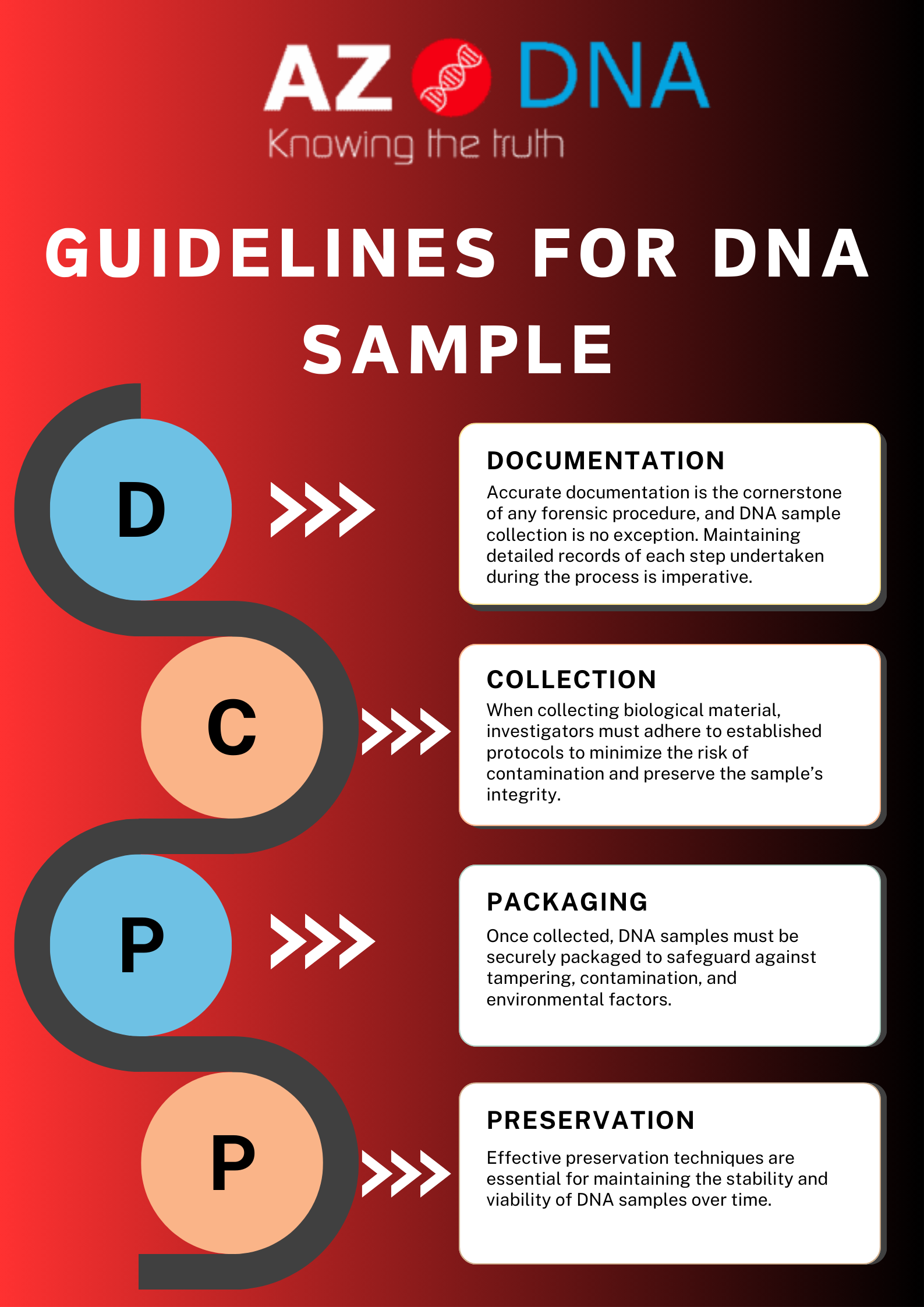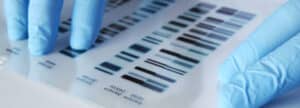DNA samples are invaluable evidence in forensic investigations, often holding the key to solving complex cases. However, the integrity and reliability of DNA evidence hinge upon meticulous documentation, proper collection techniques, secure packaging, and effective preservation methods. In this blog post, azdna.com delves into comprehensive guidelines to ensure the accuracy and integrity of DNA samples throughout the investigative process.
Documentation:
Accurate documentation is the cornerstone of any forensic procedure, and DNA sample collection is no exception. Maintaining detailed records of each step undertaken during the process is imperative. Documentation should include vital information such as the date and time of collection, the identity of the individual(s) providing the sample, the nature, and the purpose of collection.
Furthermore, documenting the chain of custody is crucial for maintaining the admissibility and credibility of DNA evidence in the court of Phoenix, Arizona. This involves recording every instance of the sample’s handling, transfer, and storage and the signatures of individuals responsible for these actions.
Collection:
Proper collection techniques are paramount to obtaining reliable DNA samples. When collecting biological material, investigators must adhere to established protocols to minimize the risk of contamination and preserve the sample’s integrity. Key considerations include:
1. Use of Sterile Equipment: Utilize sterile swabs, containers, and gloves to prevent cross-contamination and ensure the purity of the sample.
2. Minimizing Environmental Contamination: Collect samples in a clean, controlled environment to reduce the risk of external DNA contamination.
3. Avoiding Degradation: Handle biological material carefully to prevent degradation caused by heat, moisture, or UV radiation exposure.
4. Sample Collection Sites: Based on the nature of the investigation, select appropriate collection sites. Blood, saliva, hair follicles, skin cells, and bodily fluids are familiar sources of DNA samples.
Packaging:
Once collected, DNA samples must be securely packaged to safeguard against tampering, contamination, and environmental factors. Here are some essential packaging guidelines:
1. Airtight Containers: Store DNA samples in airtight containers to prevent exposure to external elements and preserve sample integrity.
2. Proper Labeling: Label each sample container with unique identifiers, including case numbers, specimen numbers, and collection dates, to ensure accurate tracking and identification.
3. Tamper-Proof Seals: Seal sample containers with tamper-proof seals or evidence tape to prevent unauthorized access or tampering.
4. Protective Packaging: Use appropriate cushioning materials and insulation to shield samples from physical damage during transportation and storage.
Preservation:
Effective preservation techniques are essential for maintaining the stability and viability of DNA samples over time. Preservation methods vary depending on the sample’s nature and the intended storage duration. Standard preservation methods include:
1. Refrigeration: Store DNA samples at low temperatures (4°C) to inhibit microbial growth and slow enzymatic degradation.
2. Freezing: DNA samples can be preserved long-term by freezing them at ultra-low temperatures (-20 °C to -80 °C) or using cryopreservation techniques.
3. Desiccation: Remove moisture from samples through desiccation methods such as lyophilization (freeze-drying) to prevent microbial contamination and degradation.
4. Chemical Stabilization: Treat DNA samples with chemical stabilizers (e.g., EDTA) to inhibit enzymatic activity and preserve sample integrity.
In conclusion, adherence to rigorous guidelines for DNA sample documentation, collection, packaging, and preservation is essential fo upholding the integrity and reliability of forensic evidence. By following established protocols and best practices, forensic investigators can ensure that DNA samples withstand the rigors of analysis and contribute to the pursuit of justice.




